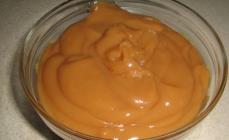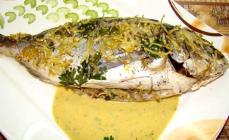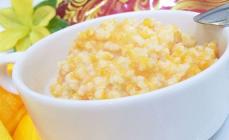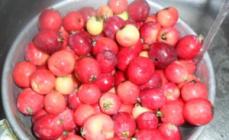Wine is alcoholic beveragehaving difficult chemical composition. It is an unstable physicochemical system. Organoleptic qualities And the chemical composition of wine largely depend on the climatic and soil conditions of the area, where grapes produced, as well as on the method of its processing. Of great importance for high-quality wines has a variety of grapes, which would be ideally suited to this area given by the soil.
Since the winemaking has appeared, a huge number of grape varieties have been tested and derived. To date, more than 4,000 varieties of wine grapes are known. Of these, the dozen has become international. These are the main white and red varieties of Bordeaux and Burgundy, German Riesling, Alsatian Gevurztraminer and the progenitor of many varieties Muscat.
Tens of thousands of people worked every year at the harvest, collecting the borders by hand and only in the 1960s, in the state of New York, there were first mechanical machines to facilitate work. Mechanical collection was widespread on large vineyards, although some regions producing high-quality wines, especially where the steep slopes continue to collect grapes manually.
The first step of winemaking consists in adding a small amount of sulfur dioxide (SO2) to crushed grapes or wort. So far, the antiseptic protecting wedge and wine from oxidation has not been replaced by anything.
If you briefly describe the process of production of wine, then it happens as follows: good grapes are selected, it is given, and natural yeast, located in grape skin, convert sugar in grape juice, in alcohol.
These capital truths Winemakers are known hundreds of years. Great wines appear where nature has shown maximum favor.
Today, each aspect of growing grapes and winemaking is controlled to the extent that did not dreamed about. The scientific foundation of winemaking is used both in regions with traditional winemaking and in small farms. On the other hand, as Professor Emil Peino said from the University of Bordeaux: "The ultimate goal of modern ethology is - a complete refusal of human intervention in the wine-making process."
In its colors, all the wines are divided into white, red and pink. With age, white wines, instead of straw-yellow, acquire intense tones, become golden-amber. Red wines and pink, on the contrary with age be pale. Pomegranate and ruby \u200b\u200bcolors are converted into brick and brownish.
- dry wine (up to 4g / l.)
- semi-dry wine (4-12g / l.)
- dessert Wine (12-45g / l.)
- liquor wine (from 45g / l.).
Wine acid, which is a vital ingredient of wine, the secret of its balance and bouquet, has unhappy properties to form crystals when interacting either with potassium (large crystal sugar), or with calcium (small, white, dusty crystals). Previously, the wine was kept for several years in the cold cellars, and these crystals were formed on the walls of the deposit barrels known as the "Wine Stone". Crystals have no taste, completely natural and harmless.
The interest of consumers to guilt as a subject of discussion and how the drink is growing every year. Strengthening this interest began in the UK and quickly resigned around the world. Today in many countries there are a lot of magazines and Internet sites about wine, wine tastings are regularly held and meet with winemakers, and wine tourism is developing rapidly.
If you want to buy wine in terms of the level above the pitcher, try to do it consciously. It is possible to buy wine for an enamelled mug, but there are wines for crystal baccarat, and it is meaningless to translate, as if it is the same. When wine has an exact place of origin, unlike nameless, it reflects concrete soil, climate, culture and tradition. Find new taste sensations and think about them.
Somehow I tried the Chilean semi-dry wine, and I didn't like it so much because I was terribly sad that I had long crossed the Chilean wines from my life.
Seeing the action in the Hypermarket "Ribbon" on Chilean Wines Frontera from Conca Y Toro, I decided to remove the embargo
Discount price was 300 rubles, the usual price is 400 rubles.
Long chose how to take. As a result, I decided to give another chance (after Likuria from Lefkada from Vinograd varieties Cabernet Sauvignon and Merlot) The blame from the grape variety Merlo fortress is 12% and the sugar content of 4-18 g / dm3.
Some information about the grape variety Merlo:
Along with Cabernet, Sauvignon is one of the most common and popular varieties of grapes. Grapes "Merlot" is known for more thin skin than other varieties of black grapes, the less high content of tannins depends on this.
This is what the manufacturer promises:
Frontera Merlot (Fronllo) is a fruit-character wine, in the aroma of the cherry tone, they are intertwined with light notes of cocoa; Elegant, rounded, with a good structure. Ideal accompaniment to pastas, cheeses, red meat and grilled chicken.
Nutritional value per 100 ml of product:
Carbohydrates - 0.4-1.8 g, energy value (Calorie) - 312 kJ / 74 kcal
 Pouring date 10/17/2014, I bought wine in November 2015. It was fell, therefore, probably, and sold on the action. The label with the Russian translation is passed separately, it means that the wine is probably produced for the domestic market (although it may not work with Chile)
Pouring date 10/17/2014, I bought wine in November 2015. It was fell, therefore, probably, and sold on the action. The label with the Russian translation is passed separately, it means that the wine is probably produced for the domestic market (although it may not work with Chile)
The label is uncomplicated. Cork made of pressed crumb of cork cork oak. Length 43 mm.
 The color of wine is dark cherry.
The color of wine is dark cherry.
 In the smell and taste of notes of burnt. A little tread the throat. In the smell, slip dryers on the breath (for this, and remove the star).
In the smell and taste of notes of burnt. A little tread the throat. In the smell, slip dryers on the breath (for this, and remove the star).
Moderately stains the tongue and lips in a burgundy color, but this does not mean that the wine is bad. It only means that the wine is red))) but keep in mind.
In taste, a little sour kinky, a little mustard, a little sweet, a little tallness. In general, a light refreshing pleasant. Saturated to taste.
There were concerns that wine would be too bitter, but the fears were not confirmed. In general, wine turned out to be inexpensive, but suitable for use.
Chegem, dry red, Abkhazia
Abkhazia bouquet, red dessert, Abkhazia
Chardonnay, White Dry, Kuban Wine (Russia)
sparkling Wines / Champagne:
Amra, Red Semi-dry, Abkhazia
Apsans, Red Semi-sweet, Abkhazia
Krasnostop Anapsky, Kuban-Wine (Russia)
Previously, 9-dollar Cabernet from Chile, without thinking, took with them to the housewarming, and the normal Chilean was served at weddings. But there are good news: Today the country has become more quality-oriented, and more and more wines from this region become unique, interesting and tasty. Many manufacturers - especially "Veramont" and "Emilian" - have taken serious obligations to develop organic and biodynamic agriculture, intensively explore the old vineyards and a unique local terroar.
And this new wine chili gives great returns for each expending ruble. If someone wants to save and get good drink At an affordable price, then Chile still remains the place where it is worth searching. But local wines have become better than ever before.
Chilean Wines: Names on the label
As in other new wine regions of the world, such as New Zealand and South AfricaIn Chile, the grape variety used in the center of the label is indicated.
Local legislation requires that the declared grape variety, the year of collection and the geographical area (Denominación de Origen) corresponded to at least 75% of the contents of the bottle. This is true, up to a quarter of the composition may not be indicated. But in practice, the chili wine contains at least 85% of the stated on the label, so that the spread of bottles in Europe remains legal.
One note: some information placed on Chilean bottles is useless. For example, Reserva or Reserva Especial inscription indicates that the wine contains at least 12% alcohol. RESERVA Privada and Gran Reserva correspond to 12.5% \u200b\u200balcohol. In addition, Reserva Especial and Gran Reserva can be used to designate the fact that the wine at least stored a bit in oak barrels. But none of these terms will tell about his quality: you can buy an excellent Sovignon Blan from the vineyards with a cool climate, which does not meet these requirements, and the terrible Chilean red dry wine from the hot regions corresponding to the necessary conditions.
Soil
One glance at Chile's card is enough to make sure that the geography of the country is truly unique. If to drive a country from north to south, you will need a week, then the widest part of it from the east to the West can be examined in a few hours. Andes are separated by the country from Argentina, whose famous Mendoza wine-growing region is located just a few hundred kilometers east of the capital of Chile Santiago.
Although the country is quite narrow from the east to the west, on some wine labels it is specified, where the vineyard is located: Costa - not far from the coast, Andes - near the mountains and Entre Cordilleras - between them.
Now let's look at the main varieties of grapes that can be found in Chilean fault.

Sauvignon-Blanc.
Bright, herbal and tart: Most of the best Chilean Sauvignon Blanc is grown in the coastal valleys of Casablanca and Leid. These regions are blown upon by cool ocean breezes, which retain the grapes fresh taste until it ripes on the warmth of the sun.
If you love Live Sauvignon Blanc from New Zealand, it is worth trying "Anachen Enco" yield 2012. This is Chilean wine, the price for the bottle of which is $ 11, originally from the Lada Valley. The glass exudes the aromas of parsley, halapeno and grapefruit. Bright acidity makes it an excellent pair of dishes requiring lemon juice- It is better to try it with seafood.

Chardonon
Just like the coastal areas of California Sonoma and Santa Barbara, the cool climate of Chile allows Chardone to shine, preserving the sourness and not allowing pegs. It is necessary to look for wines from valleys, affected by the ocean, Casablanca and Limari, or from the southern, blurred Valley of Malco.
One bottle is especially good. Sal-de-Soljardone "Crop of 2009 from" Vinya Aquitania "worth $ 28 is fermented in oak barrels, which gives a rich texture and notes of fried hazelnuts, well-balanced by great acidity. Each sip gives the taste of a crunchy red apple, bright lemon and acidic cream.
Other good wines
The very northern region of Kokimbo is better known for its pisco than good wine. But some local manufacturers make an excellent drink from grapes, once considered suitable only for distillation. It is worth trying "Pedro Jimenez" 2014 with Winery "May" ($ 13) from the Elki Valley. It is ideal for summer picnic, a full piercing lime and white grapefruit fragrances - nothing like sweet viscous Spanish wines made from this grapes.
Ready to go on? One of the best is Sauvignon-Gri, made in "Kaz Silva", yield 2012 (16 dollars per bottle) from Kolchagua. This grape rose on the vine, landed in 1912, is a reminder that Chile is not new to when it comes to fault. The name of the grape can be unfamiliar, but the wine is tasty, with a rich texture and peach-honey taste, which put it in one row with Pinot Grome from Oregon, and not with Sovignon-Blanc medium level. It is balanced cream texture and freshness. Served to picnic meat or to a large plate of fried marine scallops.

Cabernet-Sauvignon
Cabernet-Sauvignon Busino grows in the sun-flooded central valley, a large area around Santiago, which consists of four other valleys: Mayo, Rapel, Kuriko and Maule.
Those who regularly drink Cabernet from a napa and want to try something a little more affordable, it is better to start learning the Chilean red dry wine from Maito. Here you can find a lot of wineries, including such famous brands like "Santa Rita", Koncha-I-Toro and Kusigno Makul. In the central valley makes its wine Winemaker and winery "Kaz Port". Under the warm rays of the local sun, grapes, from which intense, concentrated wines, filled with ripe blackberries, chocolate and tobacco flavors are obtained. For 15 dollars you can buy "Primus Cabernet Sovignon" 2011, made by "Veramont" for filing to fried chicken Or just for a party.

If someone is looking for the best Chilean wine Caberne-Sauvignon, which implies the presence of sufficient funds, then the bottle should be asked from the famous Puente Alto district, which is famous for its gravel soils, which some are compared with Bordeaux vineyards. Famous brands From this region include "Don Melchor" from the winery "Konch Toro" for $ 75 and Cedwick Cabernet Sovignon, made in Errasuris Vintedo, worth $ 160.

Carmery
Chileans grown the Carmera grapes for more than a hundred years, but for a long time I mistakenly took Merlot for the local species. Wine and grape variety were correctly identified only in 1994. It can also be found in the south-west of France and Italy. But in Chile above all the flag of the carmeter variety.
Wine has a lot of "green" flavors, which resemble the leaves of tomatoes and green pepper. Some will call them outsiders, but when these nuances are balanced with the acid and freshness, the flavors of herbs, the "vegetable" wine can be quite well combined with food, especially how to guess, with greens and vegetables.
Fans, say, Cabernet Frana from the French tire on these wines should pay attention primarily. And if the indian pale-ale is taste, then these herbal, green flavors may not be new. One New York Sommelier called them similar to hop wines.
The same who is just starting to know Chilean should contact the original source. The first began to spill wine in 1996 the de Martino winery. Her Chilean Merlot, Legado Reserve Carmera wine "Harvesting 2012 from the Mayo Valley, which will cost $ 12 for a bottle, has characteristic tobacco and sweet-sweet flavors, but they are well balanced with a taste of cherry and light smoke.

Sira
Lovers will find a lot of excellent wines in Chile, which emphasize the ripe, enveloping fruit taste, allowing to manifest themselves to classic fragrances of grade - pepper and bacon. Highlands and coastal breezes help to soften the heat of the northern valleys of Elki and Limari, where this grape grape grape grows. Connoisseurs Like the combination of tastes of ripe plums and salty black olives in the "Merino" harvest of 2012 (16 dollars per bottle) from the Limari Valley, which bathes with a small share of Vionier, as well as they do in Ron.
Karinyan.
The winemakers of Maule's Valley have a real treasury - old vineyards of Karignyan variety, which only today is starting to pay attention. The vines of Kariñan grapes were planted after the destructive earthquake of 1939, which deprived of local rabbes to most of their plantings. The grade took place well in the dry hot climate of Maule's valley, which is not too different from the conditions of southern France or Spain, where the grapes wears the name "Masuel" and "Karignan". These old vines allow us to produce a tannic, highly acidic Chilean red dry wine, in which the aroma of fresh raspberries and sweet cherries are mixed with earthy and cedar notes.
You can also stumble upon bottles with the inscription Vigno on the label. This means ViGnadores de Carignan, a group of manufacturers in Maul Valley, offering wine from vineyards, which are at least 30 years old and which are grown by a dry way, that is, without irrigation. For example, you can allocate "Vino Carignan" 2010 from the Maul Valley, produced in the Garcia + Swadder winery, worth $ 40 per bottle. Black and pepper aromas are combined with significant tanninity and greater acidity, due to which they are fantastic satellites of the oily steak. Other manufacturers who are worth searching are Gillmore and Garage Wine.

Pinot Noura
Having gone towards Antarctica, you can get into the valleys of Itata, Bio Bio and Malco. Due to lower temperatures in these regions, the variety of Pinot Noir during the growing season matures slower, which helps the grapes to preserve the nuances of aromas and refreshing acid.
Ready for adventure? This Chilean wine reviews of tasters are called not like any of those famous "solar drinks". Pedro Parr, Consultant for the terrorist wines and partner of Latuffa Winery, located in Triaguene in Malco Valley, and in fact, seeks the opening and assessment of Chile soil. In Pinot-Nuar "Clo de Fus" yield of 2012, worth $ 30 there are classic aromas of varieties, cherries and rose petals, but they are wrapped in an intriguing combination of Genzian's tastes, sage and pines, which will be remembered to remember your favorite AMARO.
It is worth staying not to several other Chilean red wines, which are undervalued, but worthy of study.
Malbek in Chile is very different from his nearest Argentine neighbor. A much easier and juicy style should be expected, which resembles a fermented unsweetened garnet-ink juice. The wine is filled with fragrant notes of violet and peony, and it is ideal for the spring-summer season. We must be ready to spend about $ 20 per bottle.
Cabernet-Fran
Used, as a rule, for swimming with others is sometimes used to prepare wine in its pure form. Drink drink, without frills, but bright, with flavors of juicy red fruits, black and red pepper and herbs. In less than 15 dollars, you can find an excellent Chilean Cabernet-Fran, perfect wine outside the house.
Pass
One of the most cultivated and least famous Chilean grape varieties. He had a sad past of raw materials for the production of wine materials and caustic, simple, earthy and tanny wines. Today, however, in Maule's valleys, Bio Bio and Itata, you can find very intriguing old landings of this grapes. If you control the tanniness, then PAIA wines have a sharp and almost sweet taste with cherry flavors, plums and roses.
(Vinya Morande) - one of the most famous wine producers in Chile, founded by Pablo Morande in 1996 in the town of Pelken 120 km south of Santiago.
Grapes for the production of these wines of the Mankura is grown in the Central Valley region. Manual collection of berries, a favorable climate and compliance with the traditions of production allow you to create excellent wines that do not giving out a wonderful legend.
Mankura - the mythological name of Condor - one of the largest birds in the world living in Andes. Ancient Incas considered the Condore of the sacred bird associated with the Sun, the ruler of the upper world, the keeper of life, health and harvest. In gratitude for his generosity, the landpash led each year, including wine. The Great Guard flew from the mountains to pick up his gifts to the tops. The spirit of the legendary sacred Condor lives in every bottle of mancur wine.
HISTORY
Chile is a narrow strip of sushi stretching for 4 329 km in the southwestern part of South America. This small country stretching from the Atakam desert in the north to the eternal glaciers in the south, over the past few years a gigantic jump in the production of high-quality wines.
For the first time, the vine appeared in Chile in the XVI century and was delivered by Spanish conquisites.
Later, a key role in the emergence of Chilean winemaking was played by the Church, which wine was required in religious purposes. During the Spanish domination, Chilean wines began to compete with Spanish, which led at the end of the XVI century to the ban on the Spanish authorities of the production of wine throughout Chile. However, underground wine continued to be made, and its quality was constantly improved.
Only since 1810, with the adoption of the independence declaration, a new milestone began in the history of Chilean winemaking. In the middle of the XIX century, the country was delivered classic varieties grapes. Also in the XIX century, many large Chilean landowners founded their own winery, some of which exist at present.
Chile as a winery country has a number of important advantages. First, environmental and soil-climatic conditions create an ideal environment for the cultivation of a grape vine. Secondly, this is the only large winning country that has not affected by the philloxers. Grapes growing in Chile was delivered to the appearance of this disease in Europe and thus, unlike European, Chilean grapes retained his primary appearance. At the end of the XIX - early XX century, when many European countries experienced a crisis of winemaking caused by the phillox epidemic, a sharp increase in wine exports was observed in Chile. In addition, many French winemakers arrived in Chile in search of work, which brought with them new technologies, in particular, they began to build new wine cellar to the latest technology.
Currently, Chilean wines are essential competition to European wines. Their main advantage is the optimal value for money. The price moderation is explained by the fact that there is no need to apply expensive technologies to protect the vines from Filloxers, as is done in most wine-making countries. In addition, the workforce here is relatively cheap.
Unlike the European concept, where the origin prevails, i.e., the place where the wine was produced, which gives and the name of this guilt, in Chile acquired a greater distribution of the varietal concept. It is typical for the manufacturers of new light and implies the wine developed by one type of one variety.
Varnishes (Vinos Variedales, from the Spanish word "variedad" (variety) - Vinos Varietales) - young, fresh wines produced from one variety, which is indicated on the label, they are mainly valued in the first year after their production.
In Chile there were unique natural conditions for the cultivation of grapes. The country is experiencing ocean influence from the Pacific Ocean, with three other sides, it is bordered by hot deserts, mountains and Antarctica. All this contributes to the fact that there is a very smooth climate from year to year. The sediments fall mainly in the winter, which prevents excessive humidity, harmful to grapes. In summer, the survival of the vine is possible only due to the artificial irrigation, for which melt water from the Andes is used. Great amount Sunlight, high daytime temperature, sharp night cooling (due to wind from the Pacific Ocean and Air Flows from Andes) - All this contributes to the slow ripening of grapes, thus acquires the perfect balance of sugar, and acidity. The huge length of the country from north to the south causes a large variety of soils (clay, sand, loam, limestone, alert, and so on.). Most vineyards are located in the valleys and on the slopes of low hills, so the names of most wine-growing regions begin with the words "valley".
Basic grapes - Red Cabernet Sauvignon, Merlot, Carmera, Pinot Noir; White Chardonne, Sauvignon Blanc, Semilon.
In Chile, 5 large wine-growing regions are distinguished from north to south: Atacama, Kokimbo, Akonkagua, Central Valley, Southern Region (Rehon del Sur).
REGION
Central Valley (Central Valley)
Central Valley - The largest winery of Chile - located south of Santiago, between the foothills of the Andes and the coastal cordillera, descending parallel to each other from the north to south. Sometimes there are wide open valleys, but the mountains closely approach. Proximity to the ocean and cold flow of Humboldt causes a moderate marine climate, with average temperatures corresponding to Bordeaux and Napa Valley. The valley cross several rivers that form the four wine subregion: MIPO Valley, Rapel, Kuriko and Maule.






